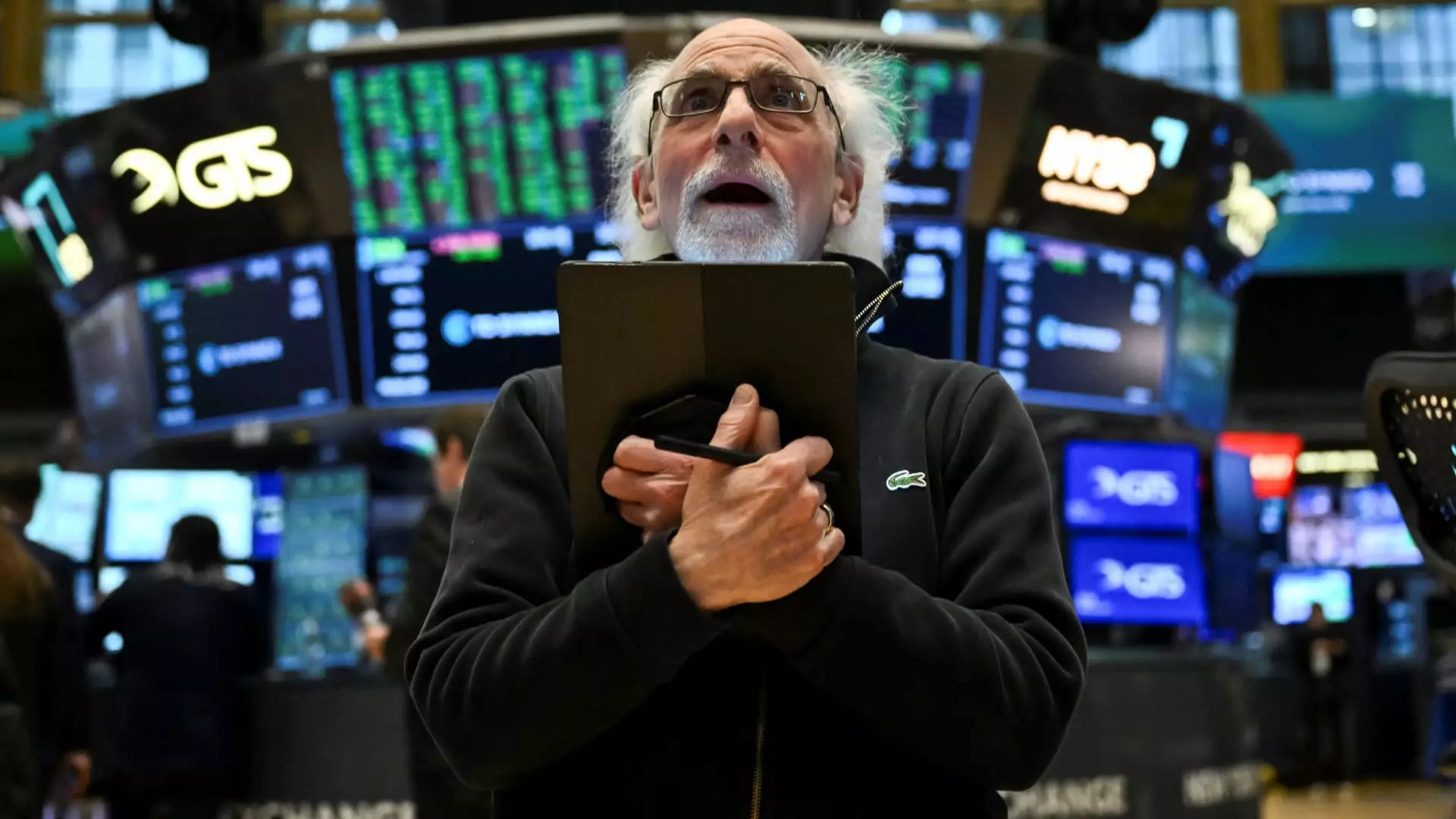When hedge funds engaged in a risky game of short selling, few could have anticipated the maelstrom that ensued during Wednesday’s trading frenzy. Positioned to profit from the anticipated decline in stock prices, these traders had amassed a staggering number of short positions, betting heavily that the market would not only falter but completely collapse. This level of confidence, however, can easily tip into a dangerous overextension. The sight of stocks racing upwards—in stark defiance of their doomsday forecasts—ushered in a wave of panic, compelling many of these very same funds to scramble to close their positions.
This sudden migration from optimism to despair within the short-seller community created an explosive short squeeze, where the act of buying back the borrowed stocks became a self-fulfilling prophecy that further propelled prices. The S&P 500 launched into an unexpected rally, achieving the third-largest gain since World War II. Such volatility raises important questions about the integrity and stability of financial markets. Is this aggressive short selling merely a speculative exercise, or does it represent a deeper malaise in investor confidence?
The Unintended Consequences of Tariffs
The backdrop to this financial upheaval was President Donald Trump’s announcement of new tariffs, an economic move that startled traders and sent ripples of uncertainty through the market. While tariffs are often seen as instruments of trade negotiation, they can have devastating effects, reverberating through the economy and creating chaotic market conditions. In this instance, the anticipated pressure of higher tariffs should have sent stocks downward, but the unexpected announcement of a tariff pause triggered a shift in momentum.
This paradox illustrates a critical dynamic in today’s investing environment: fear often trumps rationality. The traders caught in the short-selling trap were suddenly forced into action, revealing how quickly market sentiment can shift. Their plight serves as a stark reminder that the emotional fabric of trading can be just as influential as data trends and economic indicators.
Short Covering: A Catalyst for Dramatic Moves
When short sellers start covering their positions, the effect can be cataclysmic. On Wednesday, a remarkable 30 billion shares changed hands, marking the heaviest trading volume in 18 years. This rush to buy back borrowed stocks ignited growth in previously struggling sectors, particularly technology, which saw a flood of capital from traders hoping to salvage some semblance of profit. The panic-driven buying spree didn’t merely amplify prices; it created an intoxicating atmosphere where even marginal companies experienced euphoric gains.
What transpired on this day is emblematic of broader market behavior: the fear of missing out (FOMO) colliding head-on with the pain of short selling. Analysts pointed out that the ‘pain on the short side is palpable’—a vivid depiction of the anxiety that drives irrational decisions. In a world stricken by unrest and volatility, such panic-stricken trades can turn entire sectors on their heads.
The Fragility of Current Markets
Despite the euphoria of the moment, it is crucial to recognize the inherent fragility within these market dynamics. The reality remains that high levels of short selling coalesce with heightened volatility and low liquidity, creating a volatile mixture ready to explode. Analysts from Bank of America have highlighted this contradiction: while some traders basked in one of the most successful days of the year, there remains a backdrop of uncertainty fueled by external factors, including the ongoing geopolitical tensions that result from trade negotiations.
The fragility of the market is further underscored by a sense of paranoia pervasive within investing circles. A scenario that leads to such high short positions can collapse in an instant, and many investors are left teetering on the edge between fear and greed. Thin liquidity heightened by tactical short covering has the potential to unleash further market disruptions if panic-stricken trades take control once more.
In a marketplace already marred by uncertainty and fluctuating sentiment, the lesson from this historic moment is clear: while short selling can present lucrative opportunities, it also harbors significant risks that, when unchecked, can lead to tumultuous consequences across the investor landscape. The economic repercussions of such trading phenomena not only reflect individual investment strategies but also paint an unsettling portrait of contemporary market behavior—one that commits its participants to a dance with danger.

